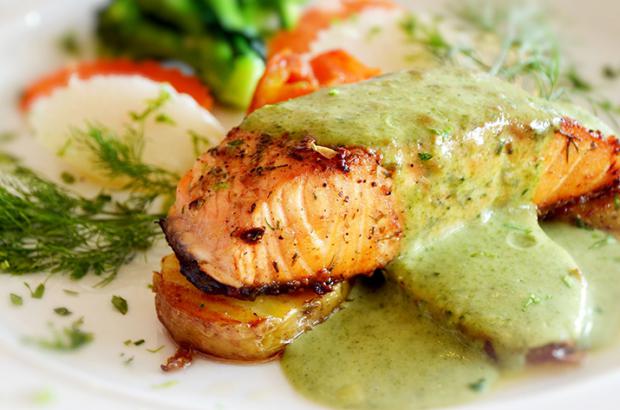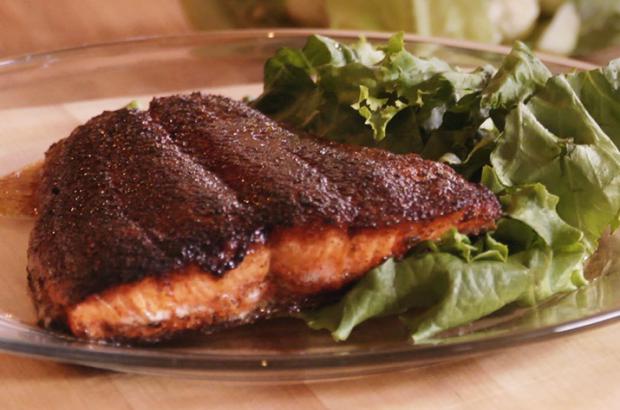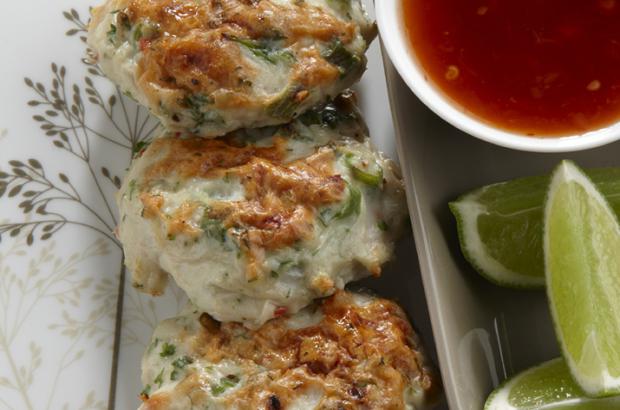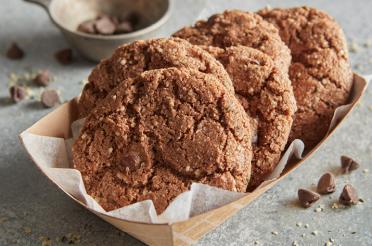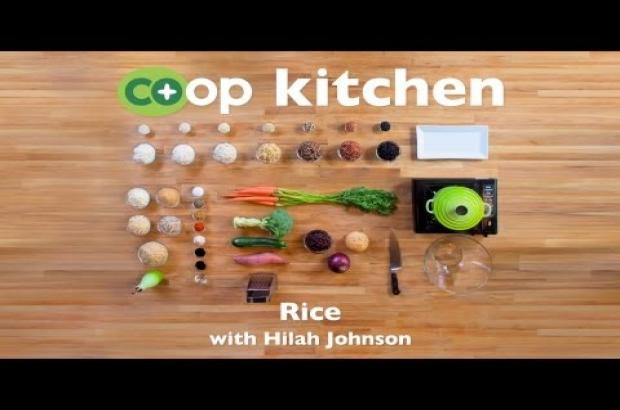Recipe
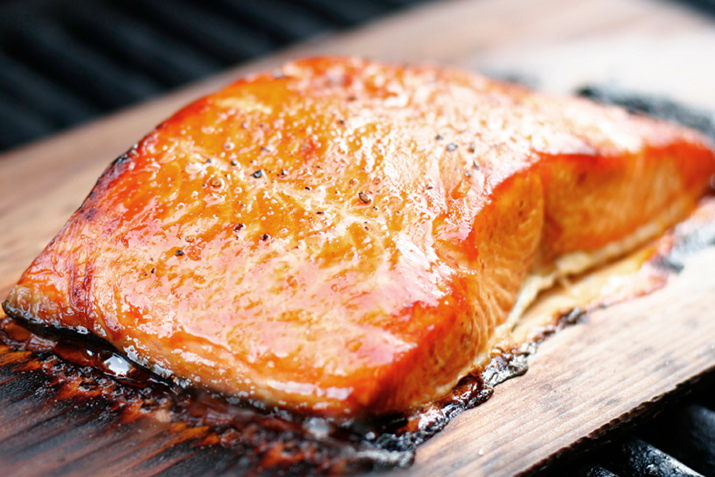
Putting that beautiful piece of wild-caught salmon on a wood plank serves two purposes: first, to cook it in a bath of delicate cedar smoke, and second, to prevent fish sticking to the grill! The plank, when placed on a sheet pan or platter, is a great serving piece, too, allowing your guests to get a whiff of delicious smoke as they sit down to eat.
Ingredients
- 1 pound sockeye or other wild-caught salmon
- 1/4 cup white wine
- 1/4 cup orange juice
- 2 tablespoons brown sugar
- 1 tablespoon tamari soy sauce
- 1 teaspoon extra virgin olive oil
Materials
- Untreated cedar plank, soaked in water
- 1 spray bottle filled with water
- 1 instant read thermometer
Preparation
- Remove any bones from the salmon and, if desired, cut into four portions.
- In a baking dish or food storage container, whisk the white wine, orange juice, brown sugar, tamari and olive oil, then place the salmon, flesh side down in the marinade. Let stand for 30 minutes. Flip the salmon over and let marinate for 10 more minutes.
- Prepare the grill for smoking (see Tips & Notes for best results). If using a charcoal grill, place the grate on high or the charcoal on one side. If using a gas grill, light the flame on just one side. When hot, place the plank over the fire on the hot side until it starts to crackle. Brush the top with oil and place the fish, skin side down, on the plank. Position the plank so that it smolders a little but does not catch fire or smoke heavily. Spritz with water if needed, being careful not to douse the fish.
- Close the lid for about 10 minutes, then check the fish with an instant read thermometer. When it reaches 140⁰ F, use tongs to move the plank to a sheet pan and carry to the table.
- Use a metal spatula to serve the fish; the flesh should lift right off the skin.
- Wash the plank and store for future use.
Tips & Notes
Create hot and cool zones
For best smoking results, create hot and cool zones on the grill. The hot zone is where the smoke is created and the food may be seared. The cool zone is where the food is placed to allow the food to cook more slowly and absorb the smoky flavor. If your grill is too small to create both a hot and a cool zone, check your food for doneness earlier as it will cook faster over the high heat
Nutritional Information
163 calories, 6 g. fat, 60 mg. cholesterol, 129 mg. sodium, 0 g. carbohydrate, 0 g. fiber, 24 g. protein

